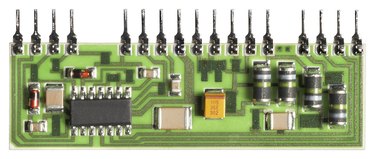
Capacitors are a common source of failures in electronic equipment. They can fail in different ways. Some fail due to over-voltage or voltage spikes. Electrolytic capacitors experience failures that begin as tiny current paths through the dielectric and progress to eventual shorts between the plates. There are three approaches to troubleshooting suspected capacitor problems -- visual inspection, in-circuit testing and out-of-circuit testing.
Step 1
Look for any capacitors showing signs of discoloration or charring. Sometimes a failure is obvious. Look for cold solder joints that may indicate the presence of heat at one time. Use a magnifier and look for any cracked capacitors, a sure sign of failure.
Video of the Day
Step 2
Test capacitors in the circuit with a multimeter set to measure resistance. Be aware that other current paths may exist on the board, making the multimeter results unreliable. If a capacitor is connected between the gate of a MOSFET and ground, for instance, and the mulitmeter shows a short circuit, either the capacitor or the MOSFET could be bad.
Step 3
Remove the capacitor from the circuit to test it. Capacitors are readily removed with thermal tweezers or a hot-air de-soldering hand piece. Test the capacitor with a multimeter set to measure resistance. A good capacitor will test over the limit (OL) of the meter display. Multimeters usually have no more than a few volts on their leads, but capacitors will occasionally break down under higher voltage while testing OK on the multimeter.
Video of the Day